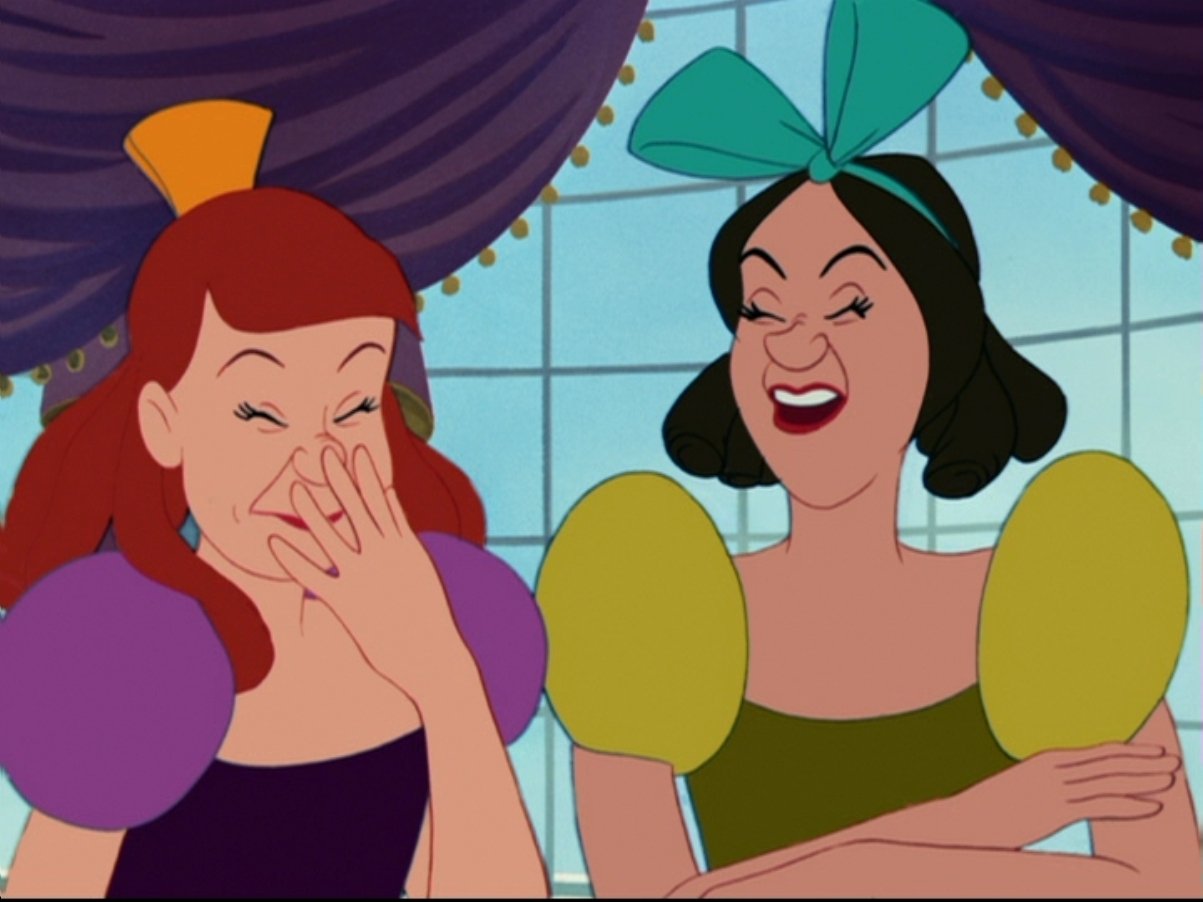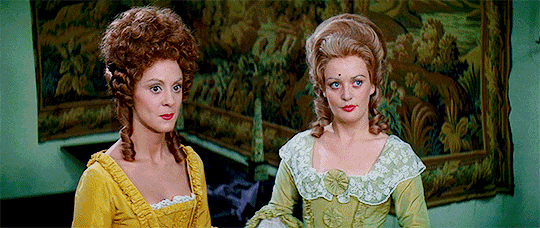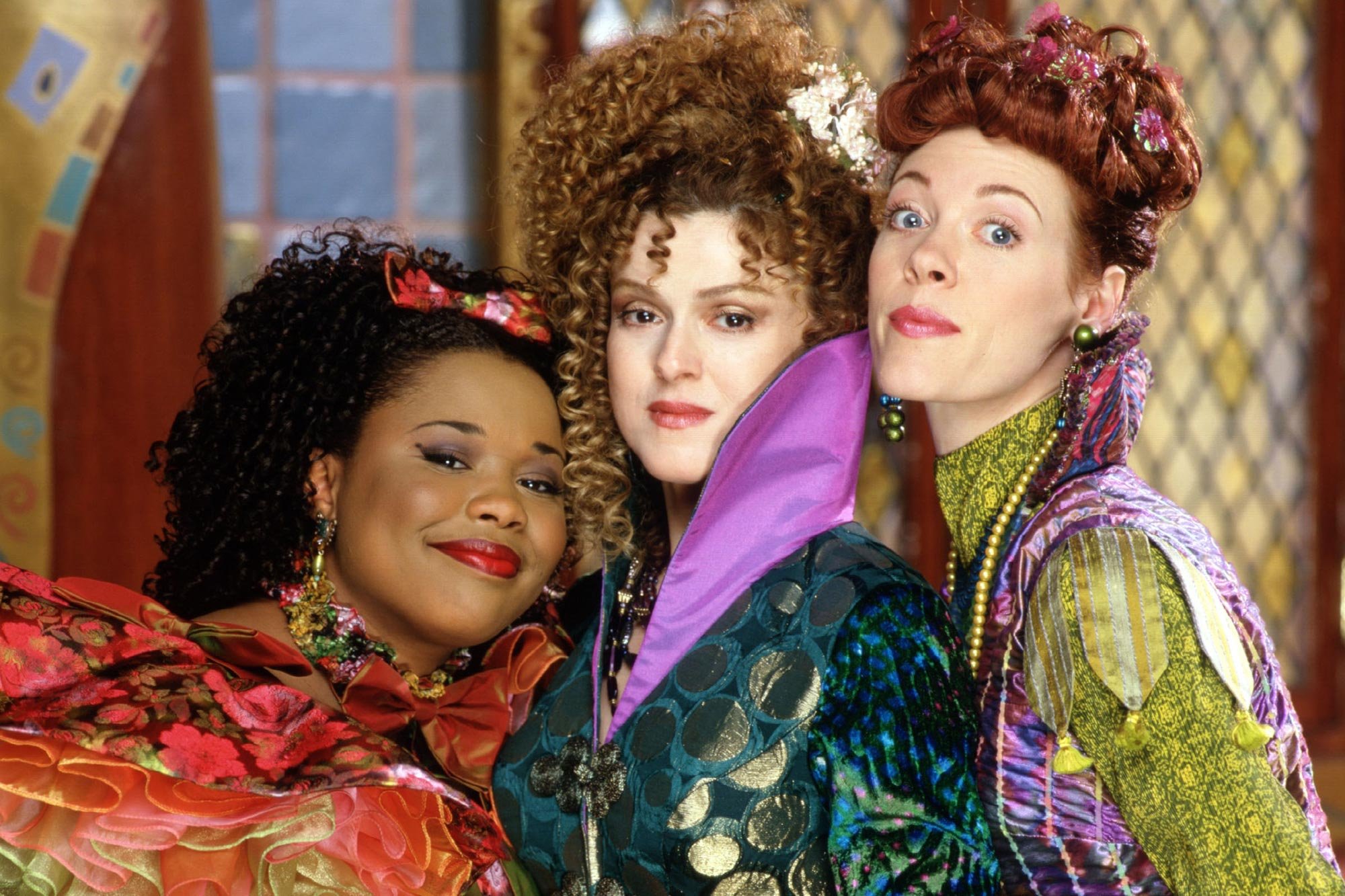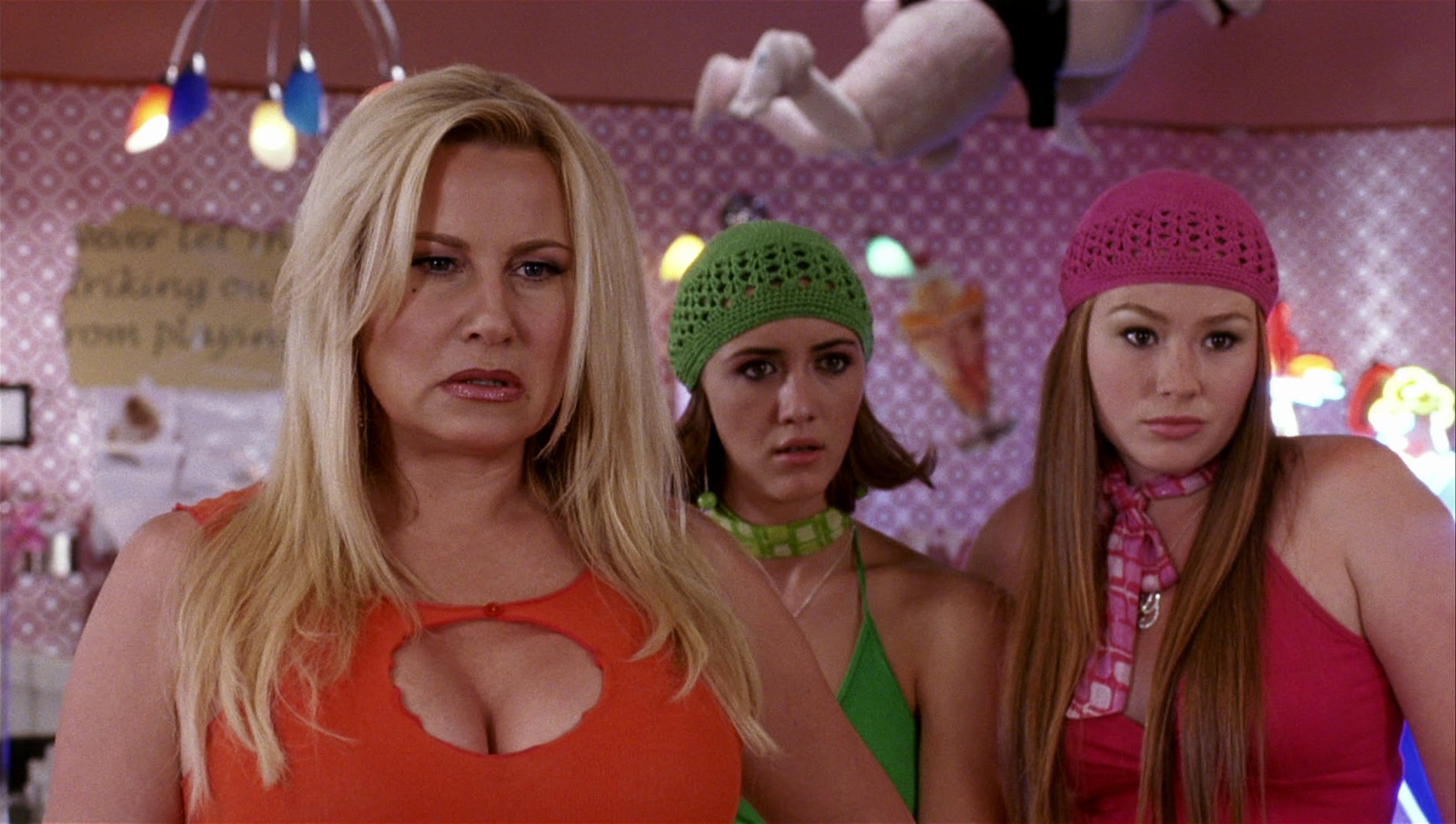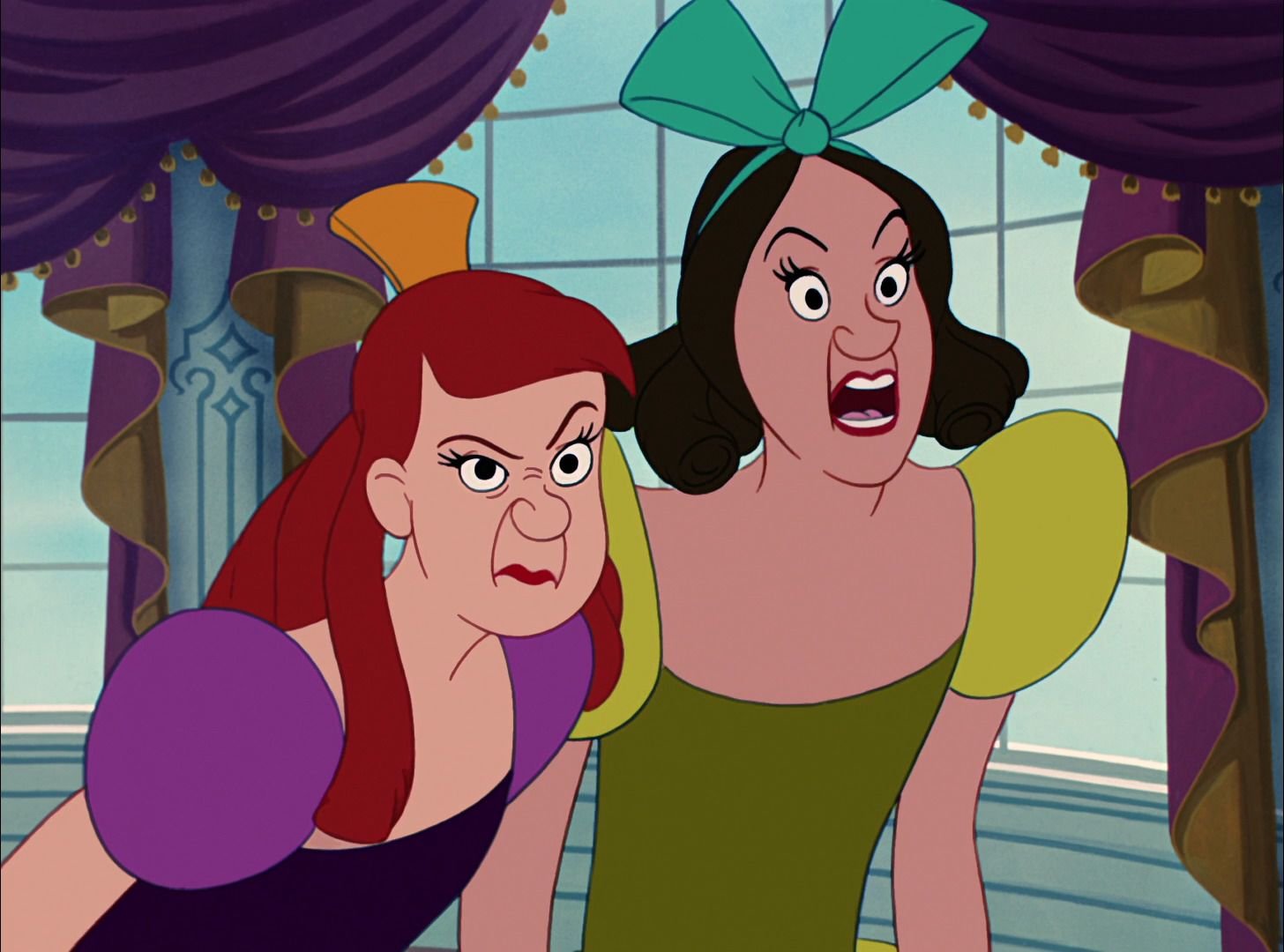The Many Versions of Cinderella's Ugly Stepsisters
Often traditional stories have 1 main protagonist (our hero) and 1 main antagonist (our villain). Disney has adopted this format for many of their movies, and sometimes given the antagonist a comedic sidekick to keep their films light-hearted. In the case of Cinderella, our antagonist, Lady Tremaine, does have her sidekicks, but they’re not always the comedic relief. Cinderella’s ugly step sisters have been a part of the story since Charles Perrault’s version, Cendrillon, in 1697. These sisters have been warped, molded and reformed into many different versions, with different names, attitudes, and looks. Let’s take a look at the many versions of the ugly step sisters.
Anastasia and Drizella. Image from: https://mickeyblog.com/2021/07/16/cinderellas-evil-stepsisters-new-live-action-movie/
The Evil Step Sisters in international Literature
The very first known version of Cinderella originated in Ancient Greece, called Rhodopis. The plot of this tale does not mimic the Cinderella we know and love today, but rather some of the key elements have been adapted and reborn into the European folktale. One of the most significant plot points, the missing slipper for the missing maid, was the central part of this Greek story. Many of the early European versions of the story did not feature step sisters for the title character. It wasn’t until the year 860 when Duan Chengshi wrote Ye Xian, a Chinese version of Cinderella. In this story, Ye Xian’s biological parents died, and she was left to clean up after her step mother and step sister. Both her step mother and step sister were envious of her beauty, and did not want her to attend the local Cave Festival, where people go to meet husbands and wives. Ye Xian uses the magic from the bones of a fish, a fish friend she had made but her step mother subsequently killed, to transform into beautiful clothing. She ends up marrying a king, while her step sister does not.
Ye Xian artwork. Image from: https://www.exsdee.com/2021/01/kisah-ye-xian-cinderella-dari-cina.html
In Vietnam, the story of Tam and Cam also features a half-sister. Tam is the Cinderella in this story, and Cam is the half-sister. Cam is manipulative to her sister, always making her look bad. Tam ends up marrying a king and becomes a queen, but returned home on the anniversary of her father’s death. Her step mother kills her, and Cam takes her place as queen. Tam reincarnates into a bird that the king grows fond of through her singing, and Cam kills the bird too. Tam eventually returns to life through a golden fruit and the care of an elderly woman, and returns home to her king. Her sister Cam ended up dying a horrible death through bathing in boiling water.
From the 2016 film Tam Cam. Image from: https://www.ocweekly.com/veronica-ngos-tam-cam-is-worth-a-watch-but-google-it-first-8457530/
One Thousand and One Nights, also referred to as the Arabian Nights, is a collection of Middle Eastern and Indian literature with no known author or dates. Some of its stories, including the tale of Aladdin, have been adapted into Western literature. A handful of the stories include tales of jealous siblings, but most of them being brothers. There is one, titled The Eldest Lady’s Tale, following 3 sisters, in which 1 of them gets married and the other 2 throw her off of a ship in envy.
Once we approach the 1600s, the plot of Cinderella becomes more refined and more closely resembles the modern day version of the story. Giambattista Basile published Cenerentola in 1634, which features an evil step mother, evil step sisters, and of course, a missing slipper. This time, the lead character Zezolla, has 6 evil step sisters, who abuse her and make her work as a servant.
Charles Perrault’s 1697 version titled Cendrillon is one of the most popular in literature. It’s also the first time Cinderella is named Cinderella; Cendrillon is the cruel nickname her evil stepsisters give her. They try to win the prince over once he arrives to their home with the missing slipper, but Cinderella prevails once it fits her. They beg her for her forgiveness, to which she agrees.
The Brothers Grimm, some of the most famous fairytale authors in history, also wrote their own rendition of Cinderella called Aschenputtel. It went into much more detail about the terrible life Cinderella lived with her step family. Her father would bring back jewels and dresses for his step daughters, but would bring a twig back for Cinderella. When it came time for the shoe fitting, the step sisters cut off their toes and parts of their heels to try to get it to fit them. During the royal wedding, both sisters had their eyes pecked out by pigeons, cursed with blindness for the rest of their days.
“Why should that stupid goose sit in the parlor with us? If she wants to eat bread, then she will have to earn it. Out with this kitchen maid!”
There are a few interpretations of the story that does not include an evil step mother, but rather has an evil step father, or only has the step sisters as the villains. Fair, Brown and Trembling, as well as Finette Cendron features the sisters as the main antagonists.
Circa 1830: Cinderella, having tried on the glass slipper, produces its fellow. Etching by George Cruikshank as an illustration for Grimm's "Aschenputtel." (Photo by Hulton Archive/Getty Images). Image from: https://www.vox.com/2015/3/15/8214405/cinderella-fairy-tale-history
The Names of the Ugly Step Sisters
Almost every retelling features different names for the ugly step sisters, while Cinderella’s has stayed somewhat consistent. Many of the early versions did not name the sisters, as they were more of a supporting role. The varying names across centuries have been:
Jun-Li in Ye Xian
Clorinda and Tisbe in the Cenerentola Opera
Javotte (or Charlotte) in Cendrillon
Anastasia and Drizella in Cinderella (1950)
Birdena and Serafina in The Glass Slipper (1955)
Prunella and Esmerelda in Rodgers and Hammerstein’s Cinderella (1965)
Isobella and Palatine in The Slipper and the Rose (1976)
Bertha and Ertha in The Magic Riddle (1991)
Calliope and Minerva in Cinderella (1997)
Marguerite and Jacqueline in Ever After (1998)
Gonril and Regan in Cinderella (2000)
Brianna and Gabriella in A Cinderella Story (2004)
Britt and Bree in Another Cinderella Story (2008)
Beverly and Victor in A Cinderella Story: Once Upon a Song (2011)
Simone and Tannis in After the Ball (2015)
Athena and Olympia in A Cinderella Story: If the Shoe Fits (2016)
Anastasia’s Redemption in Cinderella III: A Twist in Time
In almost every interpretation of the fairytale, the step sisters and step mother either beg for forgiveness and it is granted to them, or they have horrible consequences by the end of the story, like blindness, or even death. Disney took a different approach with the story though, not only to keep it child-friendly, but also to add some redemption to the characters since they grew up only knowing the cruel ways of their mother, Lady Tremaine.
The first time we see Anastasia’s hope for true love is in the direct-to-video sequel Cinderella II: Dreams Come True. The film was split up into 3 segments, with the final one focusing on Anastasia. She falls in love with a baker, but her mother and sister do not approve of him. She begins to go behind their backs to meet with him, bring him gifts, but since this is her first time being in love, it comes across rather clumsily. Cinderella offers her advice and guidance, in which Anastasia is eager to take. The baker asks her to the ball, and though her family is still disapproving, she goes with him anyway.
In Cinderella III: A Twist in Time, the film disregards the events of the sequel and reverts back to the timeline right after the first one. In this movie, Lady Tremaine gets a hold of the Fairy Godmother’s wand, and uses it to make the Prince think that he’s in love with Anastasia. After the truth is revealed to the Prince by Jaq and Gus, Lady Tremaine uses a spell to make Anastasia look like Cinderella. All is going according to plan for them right up until Anastasia and the Prince are at the altar, in which she says “I don’t”. The moral is revealed here, with her wanting to be loved just as she is. Drizella, through both of these sequels, does not change her attitude, and stays on the side of her mother.
Anastasia Tremaine. Image from: https://www.fanpop.com/clubs/disney-princess/articles/245613/title/analysis-anastasia-tremaine
The evil step sisters continue to be an important part of the story and for Cinderella’s growth. Though they have come in many shapes, sizes, and behaviors, Anastasia’s final story reminds us to take control of our own actions, and consider the hurt we can put others through.
Reference list:
https://en.wikipedia.org/wiki/Cinderella
https://www.quora.com/What-are-Cinderellas-stepsisters-names
https://www.vietnam.com/en/culture/art/fairy-tales/the-story-of-tam-and-cam.html
https://sites.pitt.edu/~dash/grimm021.html
http://www.authorama.com/celtic-fairy-tales-21.html
https://www.colorado.edu/projects/fairy-tales/aulnoy-fairy-tales/finette-cendron
https://en.wikipedia.org/wiki/Category:Films_based_on_Cinderella
https://disney.fandom.com/wiki/Cinderella_II:_Dreams_Come_True
https://disney.fandom.com/wiki/Cinderella_II:_Dreams_Come_True
